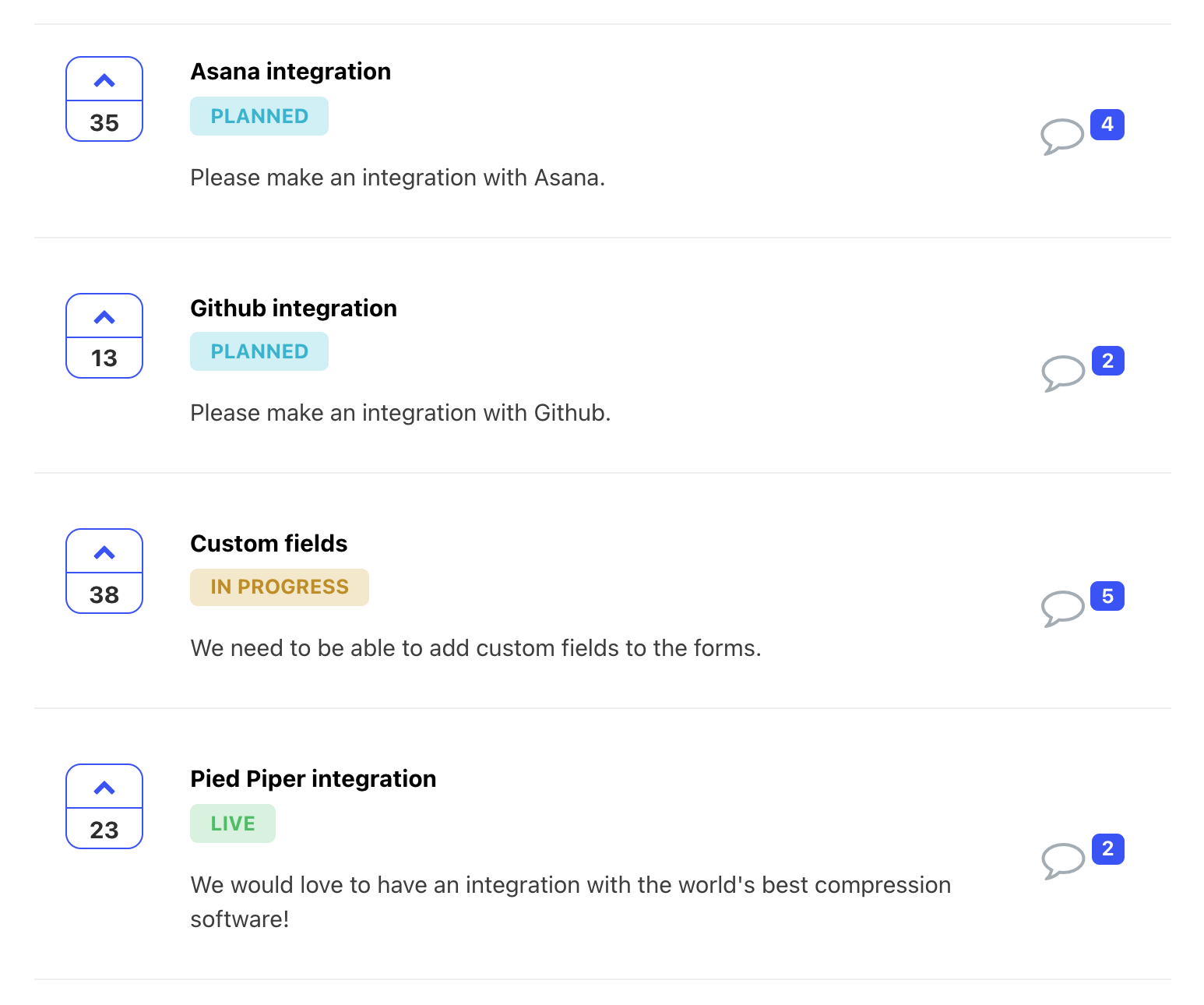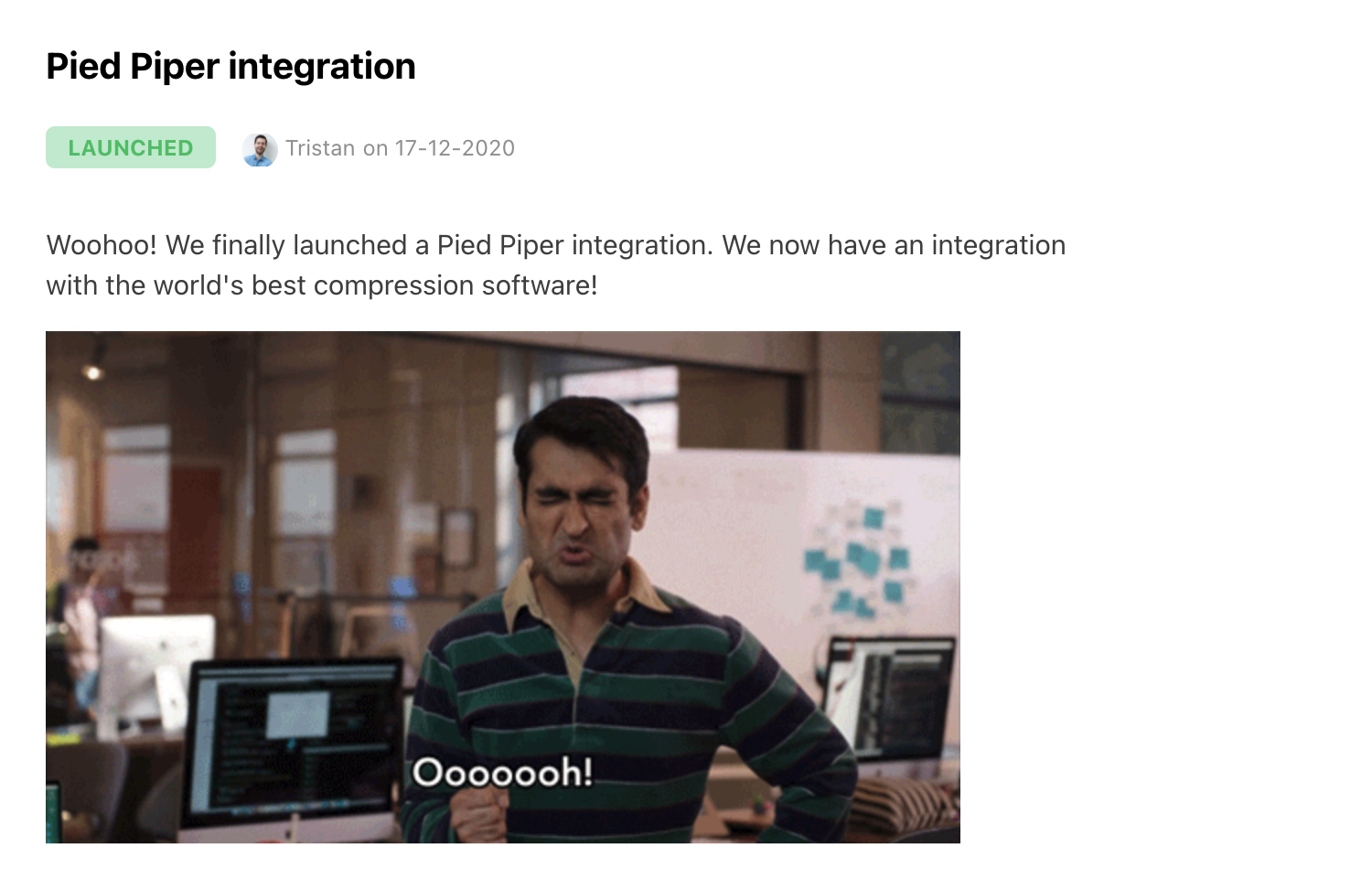How to Organize User Feedback for Better Results with COPE
Making feedback easy for your users is only half the battle. The second half is to provide your team with the necessary tools and frameworks to transform user feedback into real progress.Think about it: each day you may be generating a massive amount of user data and feedback, but how do you organize it? How do you prioritize it? How do you strategize it, setting up the next development stages? And finally, how do you help your team to deliver what’s expected from them?All these questions are especially relevant if you’ve built a big user base. Simplifying feedback analysis and its integration into the team’s workflow is crucial to keep up with demand.To streamline the entire process, you need to think globally. It’s not enough to just collect user feedback, prioritize it, and then execute it. Each step needs clear parameters that will help you maintain a flexible, yet robust process.
The COPE framework
After analyzing how professionals work on developing their software, we’ve identified four main stages of user feedback: Capturing, Organizing, Prioritizing, and Executing. That’s when started to dig into this and learned to work with the COPE framework.Let’s take them one by one and see how each stage will help you decrease the complexity of your product backlog and your developers’ work.
Capturing valuable input to ensure great output
 Planning and strategizing when capturing feedback is crucial, especially if you’re managing a massive user database. Different stakeholders and users will continuously provide observations and suggestions. If you fail to structure the way you’re capturing this information, chances are you won’t be able to extract the value this feedback provides. To avoid such waste, here are a few rules to keep in mind when capturing feedback:
Planning and strategizing when capturing feedback is crucial, especially if you’re managing a massive user database. Different stakeholders and users will continuously provide observations and suggestions. If you fail to structure the way you’re capturing this information, chances are you won’t be able to extract the value this feedback provides. To avoid such waste, here are a few rules to keep in mind when capturing feedback:
? Assess the profile of those providing the input
According to product manager Joe Van Os:
“All users are different. Some will only complain, some will have no opinion, and some will provide constructive feedback that you can action. Users who provide constructive feedback are extremely valuable. They can be called on to provide feedback on the existing product, and also for providing feedback on ideas and designs for future product improvements. As such it is important to identify these individuals and foster a relationship.”
How can you distinguish between users, making sure the feedback they’re offering is valuable? For example, there’s a big difference between feedback from those who have been using your product for a long time, and from those who are new to it. Equally, there’s a big difference between feedback from people who are providing you with recurring revenue, and from those who are just interested in using your product for a small project.Obviously, you shouldn’t discriminate against your users, but when collecting their feedback, make sure you have clear criteria that will help you identify valuable suggestions.
? Weigh the quality of the input
Not all ideas are good. Sometimes, long-term users and loyal customers may have unrealistic expectations. Also, some input may be generated by a poor understanding of the platform. In both of those cases, you’ll need to assess the feedback and decline adding it to your product backlog. To avoid making things complicated for your team, set up a quick input quality check that will help you determine if an idea or user suggestion is worth taking into consideration.
? Research and analyze the data first
Let’s say, for example, that someone requested a new feature that will take a few months of work. Before integrating this feature into your team’s workflow, allow other users to upvote and share their thoughts about the proposed addition. Maybe, in the end, you’ll discover that the majority of your users don’t care much about this feature, but desperately need an improvement that will take much less time to develop.
? Check if user feedback is aligned with your product vision
Before adding a new input into your product backlog, always double-check that the feedback is aligned with your product vision. In many cases, you’ll discover that your users want to take the development of your product in a different direction from the one you’ve established. It’s your job to stay on course and avoid considering any input that is not aligned with your overall vision. You’ll want to please everyone, but sometimes it’s important to say “No.”
Organize user feedback to avoid confusion
 Organizing the information is the next organic step to take. That’s crucial if you want to avoid overwhelming your product manager(s). Otherwise, the data you’ve collected will be out of context and your team won’t be able to add it to their workflow. Here are a few recommendations you can consider:
Organizing the information is the next organic step to take. That’s crucial if you want to avoid overwhelming your product manager(s). Otherwise, the data you’ve collected will be out of context and your team won’t be able to add it to their workflow. Here are a few recommendations you can consider:
? Create feedback categories
Each feedback should fall into one category. This way you’ll be able to make the information searchable and retrieve it whenever you need it. For example, you can create a category called “feedback source” with entries such as “free trial users,” “paying users,” “leads and prospects,” “product team,” “investors,” and so on.At the same time, you can create a category called “feedback type,” and additional entries such as “bug fixes,” “new features,” “improvements,” and other appropriate values.Then you can combine them and categorize, let’s say, “user feedback” for a “bug fix.” These categories will help you store inputs correctly and find them when necessary.
? Organize user feedback based on projects, instead of tags
Besides creating categories, you can focus on projects. For example, let’s say you’ve developed a marketing automation platform with different solutions, such as email campaigns, chatbots, and conversational marketing tools. Instead of just adding ideas and feedback based on tags, such as “bug fix,” “improvement,” or “new feature,” you can organize it based on the solutions you’ve developed. You can create a project called “email marketing,” and add bug fixes, user feedback, new features, and other feedback. You can do the same thing with the project “chatbots.” This approach will also help your product team better prioritize your next steps and decide which project deserves attention.
You can create a project called “email marketing,” and add bug fixes, user feedback, new features, and other feedback. You can do the same thing with the project “chatbots.” This approach will also help your product team better prioritize your next steps and decide which project deserves attention.
? Control access to the feedback database
Don’t add too many admins to your feedback database. Work with product managers exclusively. This way you’ll be able to control input quality and ensure good organization. Obviously, you should provide your team with the ability to view the database, along with the option to comment internally about different items added to the list.
Prioritize to know what’s important
 Not all user feedback is relevant or urgent. There’s no need to act on every input. That’s why prioritization is an important step you need to consider. You’ll discover different prioritization models:
Not all user feedback is relevant or urgent. There’s no need to act on every input. That’s why prioritization is an important step you need to consider. You’ll discover different prioritization models:
? Urgency
What’s more important: A new feature that will help you innovate or fixing a bug that keeps your paying customers from accomplishing a task? The answer is obvious, isn’t it? Start prioritizing your user feedback by analyzing its urgency. Since you have customers who can’t achieve their results because of a bug, you’ll want to solve their problem first or suffer an increase in your churn rate and people canceling their subscriptions.
Since you have customers who can’t achieve their results because of a bug, you’ll want to solve their problem first or suffer an increase in your churn rate and people canceling their subscriptions.
? Added value
Another way to prioritize your user input is by analyzing its added value. You can think both about the market and your users. Will the new feature differentiate your product through added value? Will it make it more robust and effective? Make sure to consider and prioritize feedback that will have a greater impact on the future growth of your platform.
? Cost-efficiency
And since we’re talking about added value, it’s also important to evaluate how much it will cost you to add a new feature or make an improvement to your software. Analyze its cost-efficiency, and make sure that the value a new feature will provide is much higher than the resources you’ll spend on it.
? Complexity
You may want to prioritize your user feedback based on its complexity and the time it will take to implement. Some items may be a short sprint, while others will be a slow burn. You can develop different strategies for each case. For example, if you have multiple complex items, you can decide to go one at a time. It depends on your approach, your product vision, and the resources you can allocate.
? Relevancy
Finally, you can prioritize user input based on its relevance to the projects you’re currently working on. For example, you may be improving one specific solution inside your platform and some feedback may be relevant to these changes, which would make it a higher priority.
Execute to ensure continuous growth
 Finally, the last item in COPE: Execute! There’s no point in collecting and simplifying user feedback if you don’t take any action. The main goal of gathering these inputs is to take the right actions to keep your customers happy and improve your product. And that’s possible by applying different execution frameworks your team can use to accomplish tasks in a timely manner.
Finally, the last item in COPE: Execute! There’s no point in collecting and simplifying user feedback if you don’t take any action. The main goal of gathering these inputs is to take the right actions to keep your customers happy and improve your product. And that’s possible by applying different execution frameworks your team can use to accomplish tasks in a timely manner.
Step 1. Schedule a refinement meeting
During this meeting, you can discuss the raw input that you’ve collected, and transform this feedback into a real development action plan. According to ProductPlan, these meetings shouldn’t last more than one hour. Efficiency is key.
Step 2. Organize a sprint planning meeting
Next, you’ll want to gather your team and decide how the sprint session will look. In case you’re not familiar with this term, a sprint is a short, time-boxed period designed for a team to accomplish a set of tasks. In this case, we’re talking about working on transforming user feedback into real features, improvements, and bug fixes.
Step 3. Run the sprint session
During a short time frame (usually two to four weeks), your team needs to design, code, and test the product improvements and new features you’ve decided to implement. Throughout the entire sprint, the team needs to check in daily to share their progress and any potential challenges that may impact the deadline. At the end of the sprint, they present the deliverables.
Step 4. Run a sprint review session
During this meeting, your team members review the deliverables and plan the way they’ll communicate them to the rest of the stakeholders (other team members, customers, and users).
Step 5. Communicate the product updates
A new software improvement, bug fix, or feature may get customers better results, so you certainly don’t want to keep that information from them. Communicating your product updates on a monthly basis shows your customers that you care and are working hard on improving your product. There’s no better marketing than showing consistent dedication to developing and refining your software or platform. Also, you’ll be able to close the users’ feedback loop.As you can see, getting user feedback is not the ultimate goal. On the contrary, that’s just the first step in an entire process that ensures the constant improvement and growth of your product, in alignment with your customers’ needs. That’s why making things easier for your team is a must for faster and better results, the COPE framework can help you with that.
There’s no better marketing than showing consistent dedication to developing and refining your software or platform. Also, you’ll be able to close the users’ feedback loop.As you can see, getting user feedback is not the ultimate goal. On the contrary, that’s just the first step in an entire process that ensures the constant improvement and growth of your product, in alignment with your customers’ needs. That’s why making things easier for your team is a must for faster and better results, the COPE framework can help you with that.

